Pitcher Plant in Florida
Pitcher plants are carnivorous plants that eat insects because of poor nutrients in the soil. We all read this in school and forget, but for me it was a curiosity I wanted to explore. When we decided to search for this in our Florida trip we had a bit of researching to do. First we had to find the suitable habitat. While Florida has lots of swamps and marshes the habitat for pitcher plant is not that easy to find. Obviously one can google and go direct to that location now, but tricky part is all places are not as safe as google wants you to believe. The more remote you go the more careful you have to be. So after several consideration Apalachicola national forest was selected even though it took a three hour detour from our normal path.

Florida long pine trees are an endangered species but are found in abundance in this forest.
Apalachicola national forest
The Apalachicola national forest is a large forest tract which is made up of Florida long pine trees. These trees once covered most of South Eastern United States but rampant deforestation has reduced them to these isolated pockets and only a few percent of original trees remain. Even in this forest the majority is only commercial plantation and trees were marked accordingly. We stayed in Tallahassee near the forest which is kind of a biggish town. We usually take the opportunity for camping but we heard that the area was used by hunters and it was best to stay away. White men with guns and brown alien people in the remote location don’t really mix. We have faced racism before and we are not stupid to get ourselves into unwanted trouble.
As usual we got up early in the morning and drove to the spot. It was not the usually picnic area where you have tourists. Infact hardly anyone visits this place.

The lake was so still and with the combination no sound in the background gave a weird feeling.
There was lake which was very still and hardly any sounds. Not even bird sounds ! It is kind of a thing in most American forests because of their approach to forests as natural resources. They look at animal as pests. Infact they engage in population control actively and maintain animal populations to bare minimum. In this forest in particular , the pine trees belong to the timber industry. The red cockaded woodpecker is an endangered species but still their habitat is limited by the industry.
So with little sound and any activity the lake looked kind of creepy. Add to that the season was winter and most trees had shed their leaves completely giving a ghost like appearance.
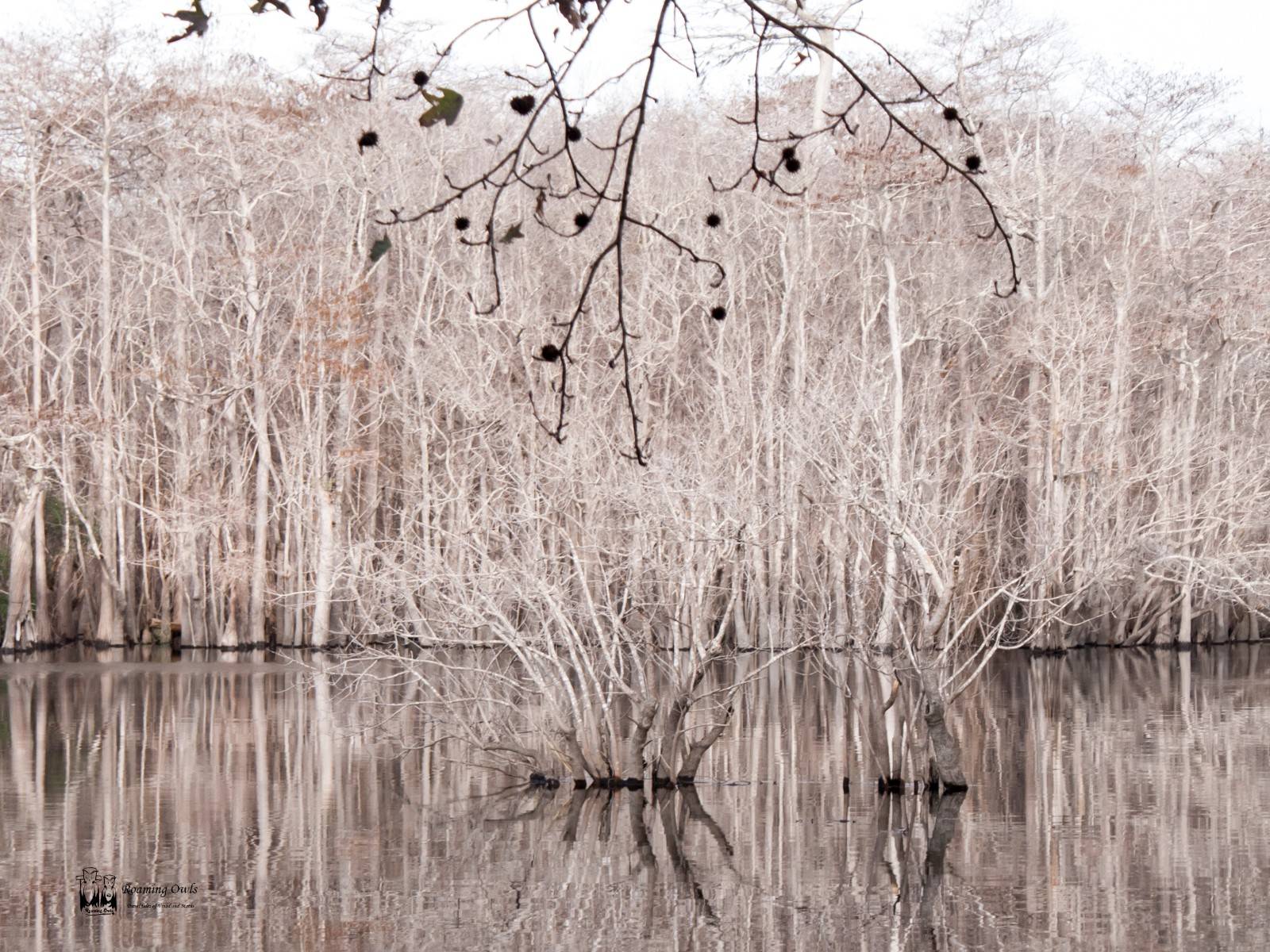
During the month of December the broad leaved trees shed their leaves and grow them back in March / April. In between they look dormant.
We decided on a trail and started walking. Slowly the forest turned from the broad leaved trees which had shed their leaves to the Pine trees. Now atleast the place was green and after a few moments some bird activity started showing up and our spirits got listed. It was a 7 mile round trip trail. We set our eyes on the pitchers and started walking. There was hardly any trail for walking because of palms growing on the floor. To identify the trail, trees were marked with a small blue patch and from one tree to another we can follow a path. Our eyes were now searching for the blue rather than anything.
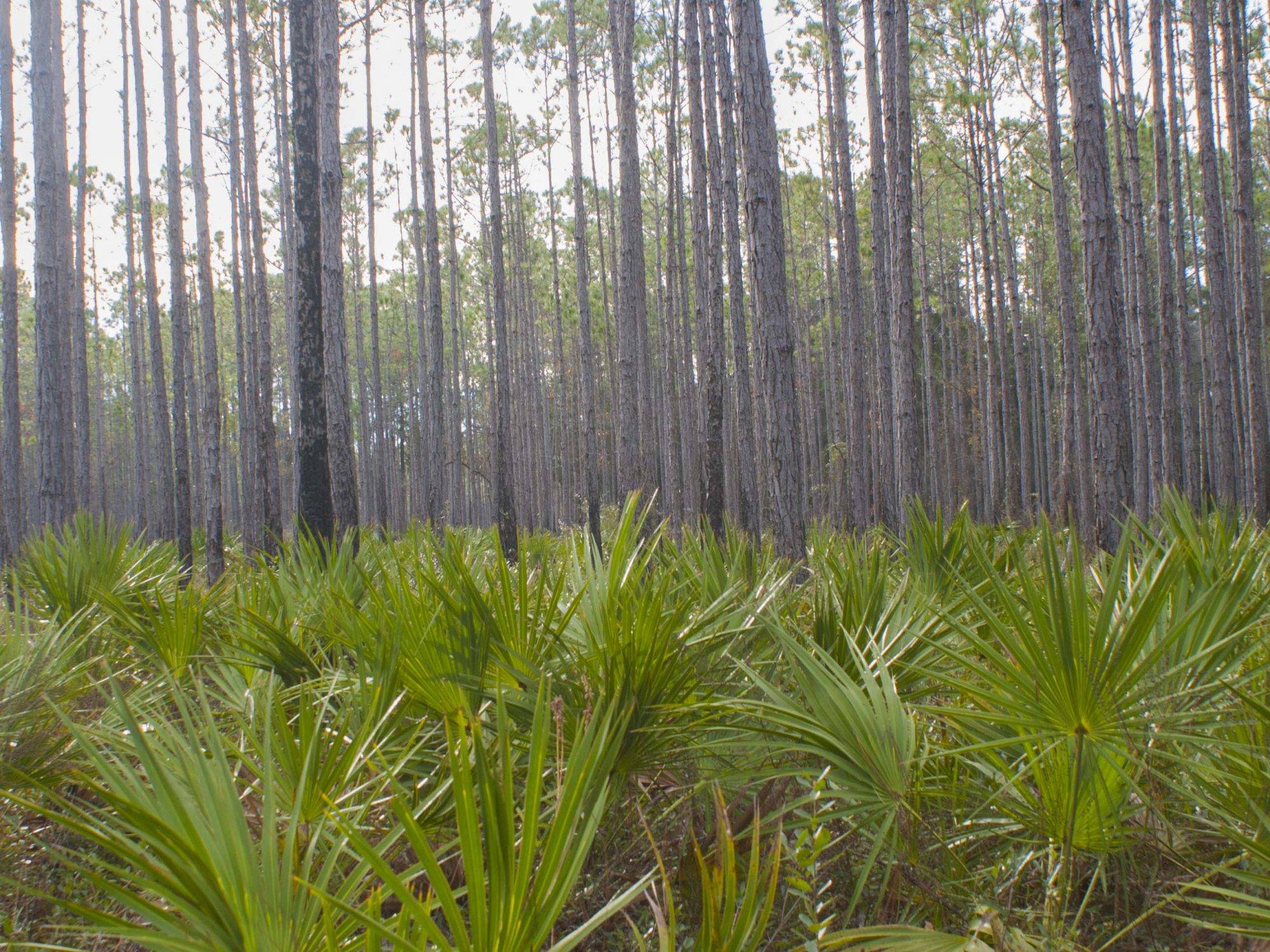
The palms growing on the ground made the navigation very difficult.
As we proceeded with the trail the path again took us back to the broad leaved trees which have shed their leaves. These trees were standing inside water and the water was pitch black. It was not as if the water was polluted but more like the color was as result of the soil conditions and other stuff. The water was also still with no movement at all. Now the funny part is we had just now returned back from Everglades of Florida. The place had crystal clear water in certain parts and pitch black water in certain parts but both had alligators. This area also has alligators. They can lay still for hours without making a movement in this kind of water so as to ambush prey. We were talking about that but did not worry as we decided not to get inside water. But that situation changed in an instant.
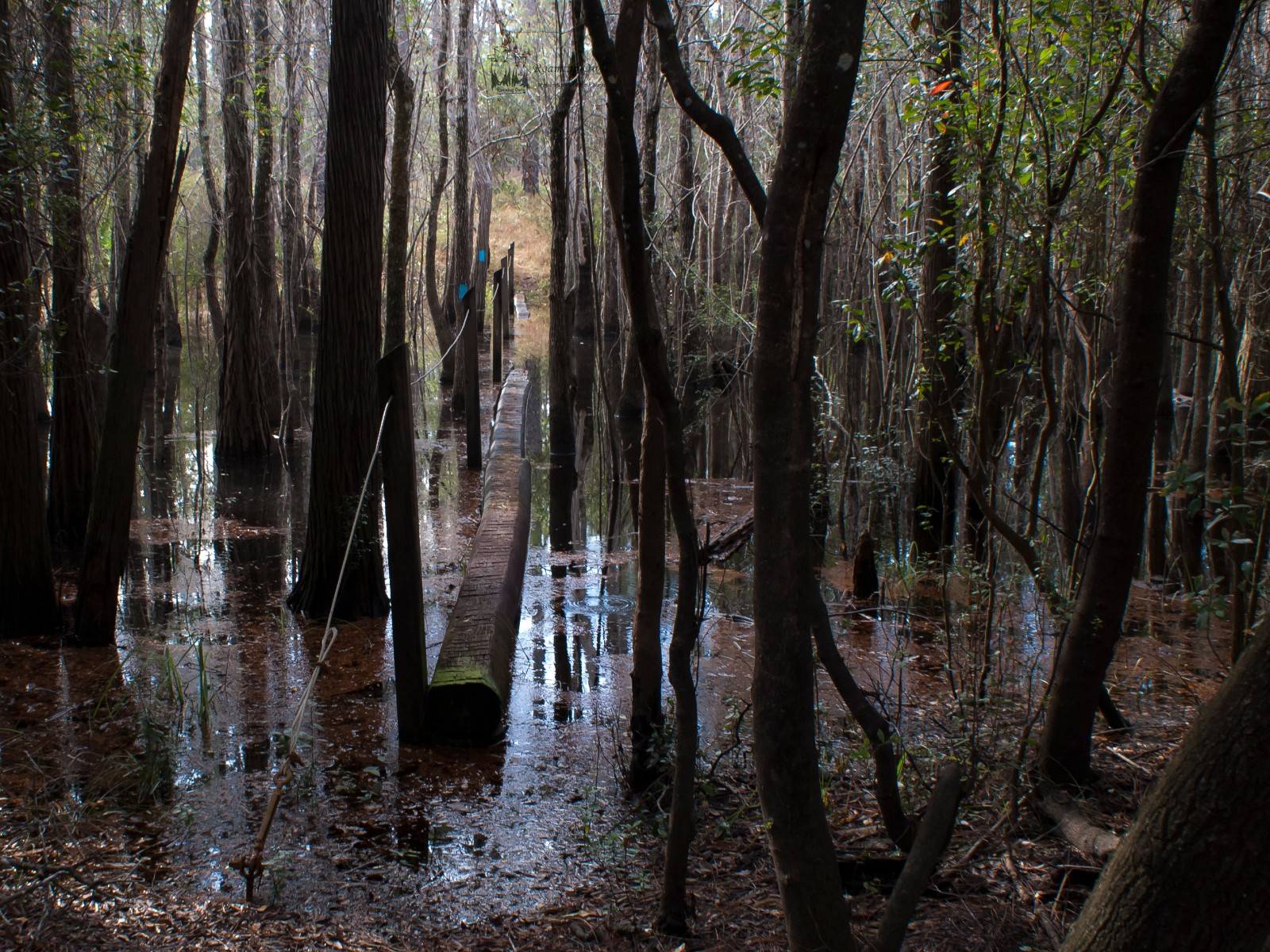
A simple log but laid on pitch black water which has alligators. Not the most ideal crossing path.
The trail took us to a place where we had to cross water. The water was only couple of feet deep but pitch black. The crossing path is a log with a metal wire for balance. At first look we thought we can just quickly cross over and keep walking but we heard a splash in the water. It was weird situation now – it was a small log to cross but fear kicked in. Possibly because of our earlier sightings of alligators but nonetheless this was now a real situation in our hands. The splash could be just a turtle or a fish or could be a alligator. We had to decide. We were already half way into the 7 mile hike and we have not seen the pitcher plant. After few moments we decided to have a dash and reach the other side and so we did. It was a relief but we also had the sense of absurdity in us because of the big deal we created just for a simple log crossing. In everglades we went for a walk in hip high water but here we were afraid about a simple log. We laughed at ourselves and “its all in the mind” and continued.
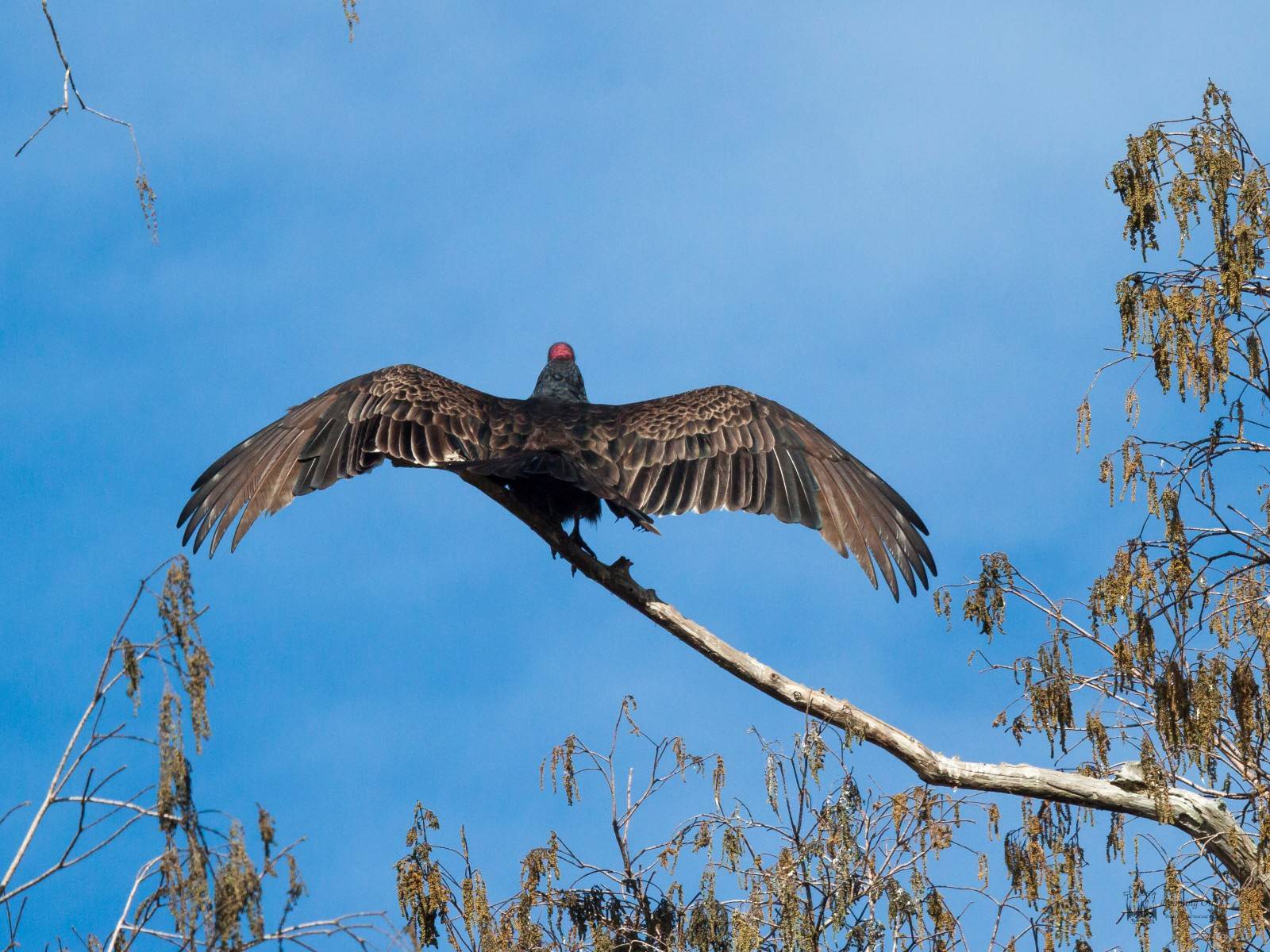
Turkey vulture basking in the early morning sun
After the funny moments we had a nice sighting of the turkey vulture basking. We waited and waited for it to turn and show its head but it never happened. Since we already had a nice picture of the vulture basking from everglades we decided to continue our search for pitcher plants. We walked for another mile and saw a bog like area and we were sure this should be the place and started searching all over the place.
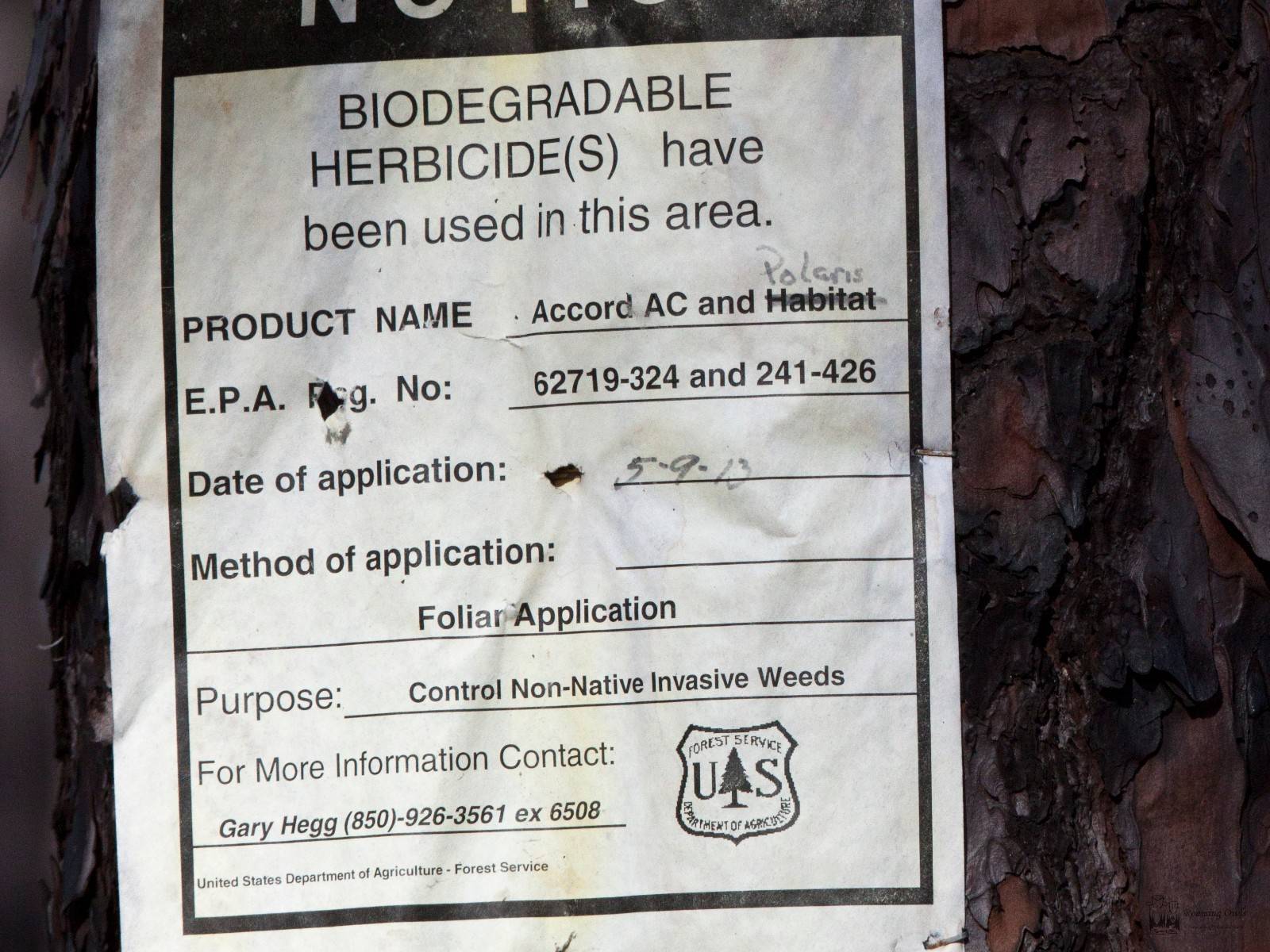
The US forest service engages in active forest management. They had put up a notice about herbicides have been sprayed in the area. For person searching for plants this is the last thing one wants to see.
While we were randomly searching for the plants suddenly we heard other voices. We became alert as we were not sure if they were hunters or not. It was a family of husband,wife,kids and grandfather. To our amazement they have come for pitcher plants too. We all started searching for the plant together. Finally mathi found a plant but it was not upright like we expected it to be. We came here to see a pitcher plant species that grows to 2 feet in height but this one was lying flat on the ground. The lady of the group was quick to identify the pitcher plant as parrot pitcher.
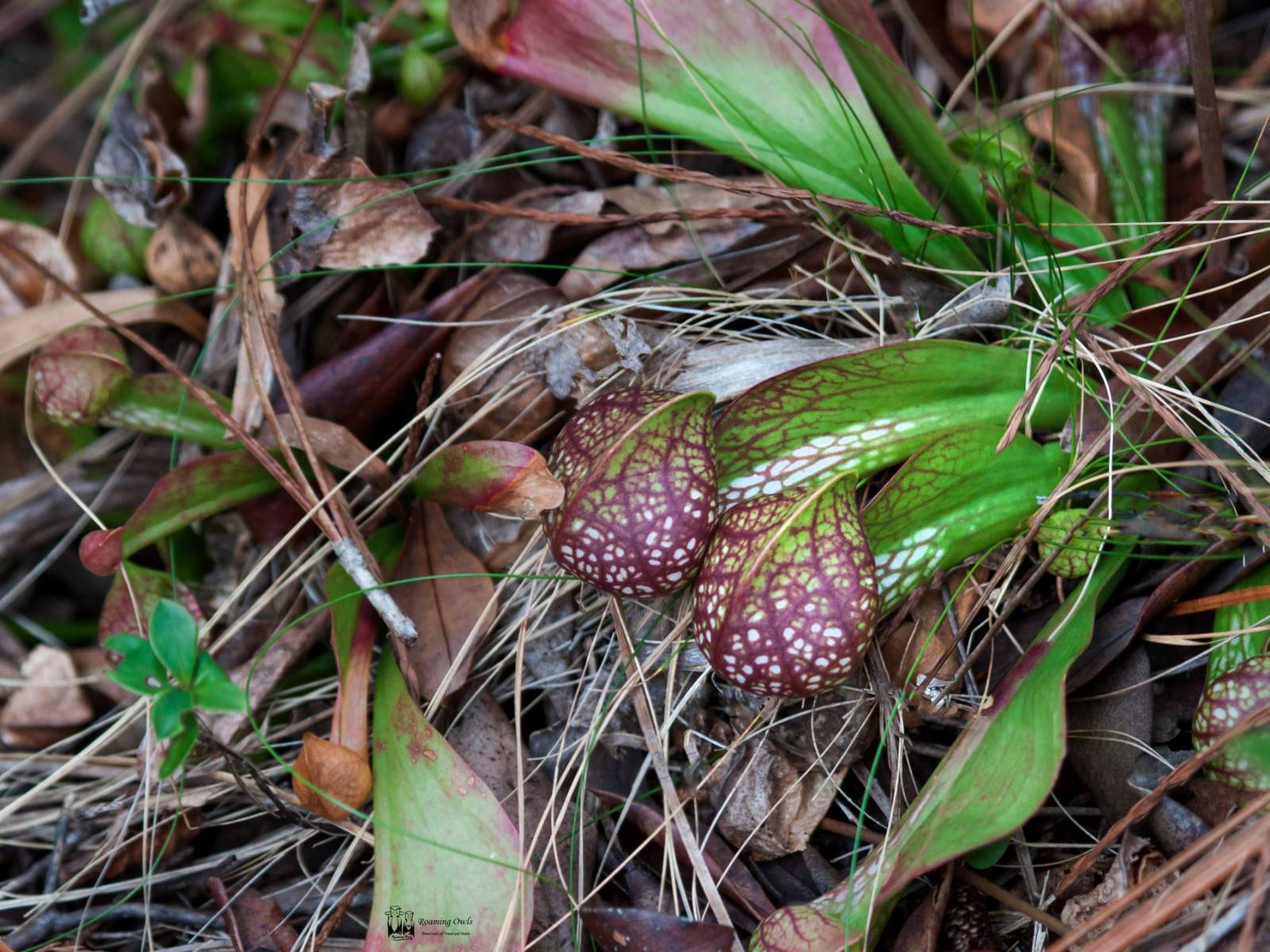
Not the one we came searching for but nonetheless a rare find. Sarracenia psittacina, also known as the parrot pitcher plant
They were so happy to find that pitcher plant as this was much harder to find than the other species Yellow Trumpet Pitcher Plant. The species we found was under a bush in leaf litter and was identified as Sarracenia psittacina, also known as the parrot pitcherplant. We also found out that the other plant dies off every season and emerges only in summer. We did not anticipate that, as we thought that these plants in nutrient deficient soil will survive the winter so as to avoid spending energy in growth. We were so confident about this that we did not even study about the seasonal variations of pitcher plant. Well, another lesson learnt ! But for us the biggest lesson is that if fear creeps in even a small log can be a mountain to cross.
Having seen the pitcher plant it was now 1000 miles or 1600 km drive back to our place in the middle of winter with news of snow storm creeping in. All for the plant but a special plant for me as I had found my first pitcher in the wild. A school time dream came true 🙂